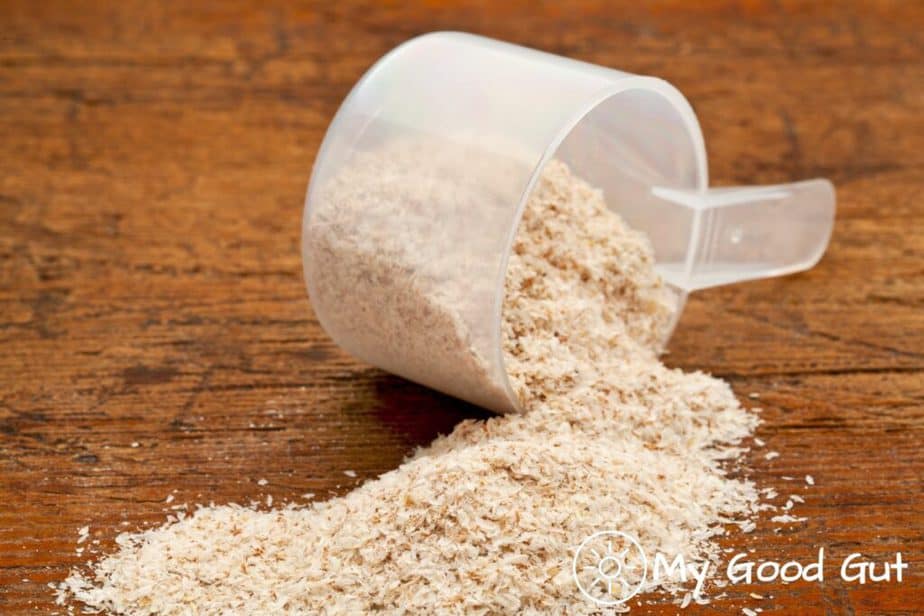The most pressing question people have about bowel movements is “Why am I constipated,” and how do I know what’s normal?”
Bowel movements and constipation are not exactly water-cooler conversation, so most people don’t know if their situation is classified as “constipation,” or how many bowel movements they ought to be having each day.
No one really likes to think or talk about what’s coming out of their rear end (well, almost no one over the age of twelve), but how often you go can have a dramatic effect on your health.
This article will help you know whether you are constipated, why you can get constipated, and what you can do to prevent and stop constipation.
Am I Constipated? What Is Normal?
When it comes to constipation, people always ask how often they should have a bowel movement. Some people will have three or more bowel movements a day, while others will only have one a week.
Some people with a bowel movement every few days may feel constipated if they haven’t had a movement in a week. On the other hand, other people will believe they are constipated if they don’t have movement every day.
The general consensus among people is that fewer than three bowel movements per week qualifies as constipation, or if their stool is hard and/or difficult to pass.
But what’s “normal?” Once per day or three times per week?
Which Is Right…Who Defines Constipation?
For the questions of what is normal or “not constipation,” we can turn to three sources to look for the answer.
Animals
Most animals have a bowel movement after they eat a big meal. One way of training a puppy to go outside is by keeping them in an enclosure for half an hour after they finish eating, and then taking them outside.
Birds are famous for going during their meal. Similarly, cats, dogs, horses, goldfish, and other animals all go shortly after they have eaten.
Domestic animals will usually suffer more constipation than wild animals because of the foods we feed them.
Children
Small children can also follow the pattern of animals and that can help us to determine what is normal. For example, breast-fed infants will have a bowel movement after every large feeding.
Parents can often time when toddlers will need to use the bathroom. They know that shortly after eating breakfast or lunch, children will head to the bathroom. Running around and staying active will help in increasing that likelihood.
Fewer children suffer from constipation than adults, but it can cause issues during potty training.
Non-Western Cultures:
We can use another method to uncover what is normal by looking at people who live in different cultures and eat a diet that is linked to their environment.
Scientists studying these people have noted that they typically have two or three bowel movements per day, and these movements are usually much heavier (i.e., contain more fluid) than the stools of people who eat a typical Western diet.
Non-western people don’t have large stacks of reading materials next to their toilets because they don’t sit and wait for a bowel movement to happen – it just happens.
Taking our cue from these various sources, we find that the natural number of bowel movements is probably between two and three a day – one for each major meal of the day.
For health reasons, it is good to have at least one bowel movement a day. If you have less than that, you could be classified as suffering from constipation.
How Did We Become So Constipated?
Some four million Americans experience constipation on a regular basis and more than half will visit a doctor each year with constipation as a major complaint. Constipation tends to happen more often in pregnant women and the elderly, but it can strike people of all ages. At last count, over $821 million dollars a year was spent on laxatives in the U.S.!
The first major reason why Americans suffer from so much constipation is because we are trained not to go to the bathroom when we have the urge. When you were young and in high school, remember when you had to study for tests? You couldn’t just get up and go to the bathroom any time you wanted to.
After eating lunch and while sitting in class, you’d receive the signal from your body that it was time to use the bathroom. But did you go? No, you continued to sit there and ignore your body.
It is unusual for an animal to hold its poop for very long. We have muscles and the ability to hold onto our stool, but in the wild, that is a rare occurrence. Most animals and babies just go when they have to go. However, we are taught to hold our bowel movement until a more convenient time.
The problem with this kind of training is that the brain eventually gets the message; it will stop telling your body that it needs to go to the bathroom. The muscles that help keep stool from coming out also become stronger and better at holding it in. It becomes a vicious cycle.
Another reason for the large number of constipated people in the United States is the standard American diet. The stool of people living in their native cultures is full of fiber. Diets with higher levels of fiber mean that the bowel movements are larger and bulkier. A larger stool is easier to pass.

Most of the food we eat here in the U.S. is made from ground up grains such as bread, cereal, cake, and other food made from flours. Eating grains is fine; however, it is much better to eat them in their whole form – similar to most people eating rice. The difference is that eating grounded grains will lead to stool that is hard and compacted.
Imagine dirt or soil. If the soil has a high proportion of organic material called humus or fiber, it is light and airy. If there is no organic material, it would clay.
Your bowel movements and texture will be similar. Stool can either be light and bulky, or clay-like, depending on what you eat.
Another reason for all the high levels of constipation in the U.S. is due to the lack of bowel care and giving them a rest (more on this later).
The Consequences of Constipation
There are a number of problems that can arise from constipation. Even though the cells that make up the wall of the large intestine (colon) are very tough, they can’t take constant abuse.
Constipation is more likely to cause several diseases, including hemorrhoids, which may be caused by straining when having a bowel movement.
Anal fissure is a painful condition that occurs when a hard stool tears the tissue on the inside wall of the anus. It may cause pain or bleeding.
Severe complications from not eating enough fiber include rectal prolapse, where the intestinal lining is pushed from the anal opening.
A fecal impaction is a condition where the stool becomes too hard to pass, and it must be removed manually.
Appendicitis is thought to be caused by an infection, but the incidence is higher in individuals who are always constipated. Appendicitis is more likely to occur when children consume less fiber than they need.
Your Anti-Constipation Action Plan
Constipation is definitely not a pleasant experience, and it can have lasting effects on your health. Constipation is also a common side effect of certain medications and some diseases.
If your constipation is caused either by drugs or a disease then you can find relief by going through this action plan, but you should always check with your doctor first.
Step 1: Assess Your Digestive Health
Some people think about bowel movements every day, while others cannot remember when their last one was or what it looked liked.
Understanding your bowel movements’ frequency, consistency, and energy required can help you get on the right track to improve constipation.
Even the color and consistency of your poop can tell you something about what’s going in your GI tract.
Step 2: Consume More Fiber
Okay, fiber can be boring. It’s not as flashy as some other supplements that you may be taking, but it is essential to your health.
Fiber adds bulk to your diet, reducing constipation, and it also plays many other roles throughout the body. Fiber is what ensures that many toxins leave your body. Fiber will grab other molecules to take as it leaves your digestive system.
When your body wants to eliminate something, it sends it through your digestive system. If there is enough fiber, that molecule is removed from the body. If there is not enough fiber, that molecule will be reabsorbed.
Fiber also provides a source of food for the bacteria in your gut, which helps them grow. Bacteria break down the fiber, and we benefit from the vitamins and nutrients that they extract.
High fiber foods to eat include vegetables, fruits, and whole grains. Remember, when you eat grains in their whole form, don’t always grind them into flour.
Fiber supplements are also a great addition to any health plan. You can try mixing fiber into a smoothie, orange juice, or coffee every morning.

Step 3: Drink More Water
How many times have people told you that you should drink eight glasses of water a day? Yes, water is important.
Most people don’t realize that water is vital to regular bowel movements. The more water you drink, the easier it is for you to have a bowel movement (or at least a softer one).
If you aren’t drinking enough water, your body absorbs water from your stools, which causes them to become dry and hard.
How do you know if you’re getting enough water?
Check your urine. If your urine is bright or dark yellow, then you are not drinking enough water. Your urine should be close to clear and water-color.
You should remember that some vitamins can cause your urine to turn bright yellow, so this test might not always be accurate.
- Related Article: Can IBS Cause Water Retention.
Step 4: Take a Seat on the Toilet
Remember that you’ve trained your brain not to tell you to go to the bathroom.
If you want to retrain your brain, you can sit on the toilet half an hour after eating to tell your brain that it’s time to flush out some of the food from your stomach.
While you may feel foolish sitting there, this kind of training can really work. Take a book or some other reading material with you to the bathroom. Spend about five to ten minutes just sitting on the toilet after your meal.
Step 5: Stay Active
Walking is a great way to help stimulate bowel movements. Walking and running are the best exercises, but any type of exercise will work.
Exercise is essential for health and well-being, not just for regularity. Everyone should exercise as much as possible.
There are also over-the-counter options for constipation relief: Castor Oil, Enemas, and Suppositories.
- Related article: Is Castor Oil Good for Constipation?
Why Am I Constipated Final Thoughts
Constant constipation is not a healthy way to live. It can be uncomfortable, inconvenient, and unhealthy.
Constipation is a condition that no one should suffer from; it is a completely treatable condition that’s not difficult.
You need to take good care of your gut like any other part of your body.
You may be interested in these other articles:

